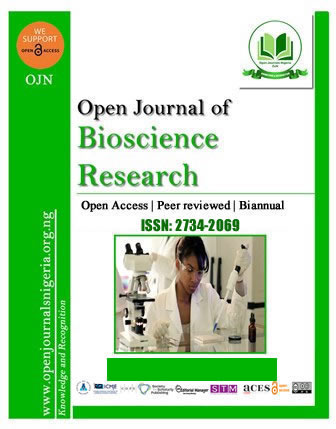EFFECT OF TEMPERATURE AND PH ON PHENOL BIODEGRADATION BY A NEWLY IDENTIFIED SERRATIA SP. AQ5-03
DOI:
https://doi.org/10.52417/ojbr.v1i1.57Keywords:
bio-removal, PH, temperature, phylogeny, phenol, 16s rRNAAbstract
Phenol is mainly used by the industries to produce a variety of chemical products such as resins, textiles, pesticides, plastics and explosive. The wide use of phenol and other phenolic compounds by industries, has resulted in an increased presence of these toxic compounds in the environment as pollutants. Bio-removal of phenol by microorganisms especially bacteria has been demonstrated to be the most effective and economical approach compared to physio-chemical methods. The search for efficient phenol-degraders especially local sources to remediate local phenol pollution is important as indigenous bacteria usually have better survival and resilient to local geographical conditions. In this study, a phenol-degrading microorganism was isolated from local soil and waste water bodies. Identification was carried out using gram staining, 16s rRNA gene sequencing and molecular phylogeny analysis using the Phylip software. The isolates were inoculated in mineral salt media with 0.5 g/L phenol as the sole source of carbon. Phenol degradation was determined using 4-amino antipyrine method. Physical and cultural conditions influencing phenol degradation such as pH and temperature were optimized via one-factor-at-a-time. Through phylogeny analysis, the isolate was identified as Serratia sp. and the sequence was deposited the NCBI Genebank and accession number KT693287 was assigned to the bacteria. The highest degradation was achieved at pH 7.5 (phosphate buffer) and temperature of 30°C. Ammonium sulphate was established to be the best nitrogen source at the concentration of 0.4 g/L and a sodium chloride concentration of 0.15 g/L.
Aisami, A. | Department of Biochemistry, Faculty of Biotechnology and Biomolecular Sciences, University Putra Malaysia, Selangor, Malaysia
Published
Versions
- 2020-05-12 (1)
- 2020-03-10 ()
How to Cite
Issue
Section
Copyright (c) 2020 Aisami, et al.

This work is licensed under a Creative Commons Attribution 4.0 International License.





















